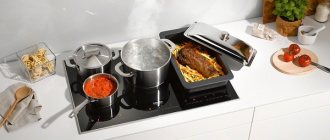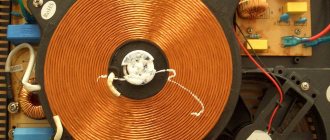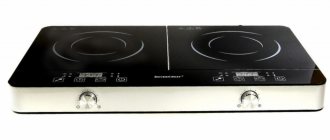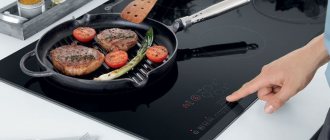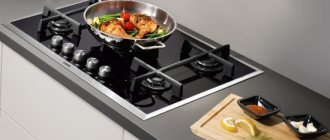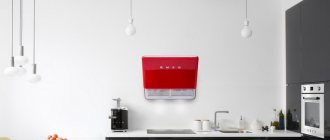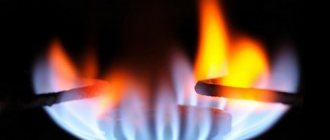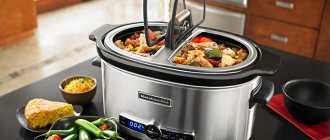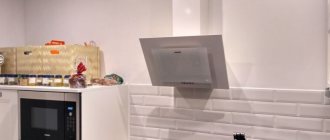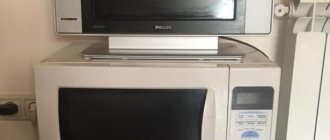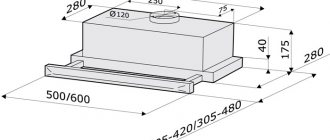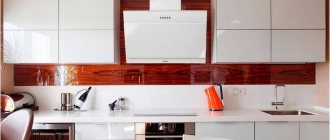An induction built-in hob is considered one of the safest appliances for cooking, when working with which burns on the working surface of the panel are completely excluded. In addition, induction cooktops have several advantages over electric cooktops. This includes ultra-fast heating, economical energy consumption, durability with proper use, as well as being equipped with a modern security system. Quite complex installation and the need to contact specialists to install a built-in induction panel often force the buyer to choose an electric built-in hob.
If you follow all the rules established by the manufacturer, then you can install the induction hob yourself. A kitchen appliance installed in accordance with all the rules will last a long time, ensuring the safety of you and your loved ones. Therefore, if you like modern induction hob technology, then here are some basic rules for installing an induction hob from kitchen appliance manufacturer Graude.
Rule 2- Countertop insulation
Along with insulating the device itself, it is also necessary to insulate the cutout in the countertop. This is necessary so that moisture does not get into the place of contact between the induction panel and the countertop. It is also prohibited for liquid to come into contact with the electrical parts of the device. Typically, insulation spacers are supplied with the panel itself.
Under no circumstances use silicone insulation to mount the device, as it will be impossible to remove the panel from the countertop in the future. Choose only insulation that can withstand high temperatures.
How to choose
Built-in cookers and ovens are sold as a set or separately.
For this reason, hobs are divided into dependent and independent:
- for dependent surfaces sold complete with the oven, the control buttons are located on the oven door;
- for independent ones, the controls are located on its surface.
Ovens designed for built-in have the following sizes:
- width 60, 90, 45 cm;
- height 45, 55 – 60 cm;
- depth 50 - 55 cm.
The design of the module takes into account the dimensions of the hob: the distance to the wall or other vertical surfaces must be at least 50 mm for air circulation so as not to cause overheating. The cabinet for the hob and oven can have a drawer at the top or bottom.
But which gas stove is best for use and what parameters should be selected, this information will help you understand.
In the video - how to make the right choice:
Do not mount the stove above an oven without ventilation.
The installation of the hob must have a perfectly flat surface so as not to interfere with its performance characteristics.
Connecting a hob to electrical wiring requires professional knowledge, since the cross-section of the connection wire is calculated independently depending on the power of the stove.
The electrical wiring must be protected; a switch must be installed to turn off the stove in an emergency.
When installing a built-in oven, the following rules must be observed:
- the room must be dry;
- have good ventilation;
- The location of the oven should provide easy access to the controls.
In the design of the box, it is necessary to take into account the width, depth of the oven and the size of the gap under the lower (upper) drawer.
If the oven box has a back wall, then you need to cut a hole in it for the electrical wires. The wiring must match the power of the electrical appliance.
When installing a gas oven, you need to connect the main line to the hose from the oven.
The connection must be made by a specialist.
After placing the oven in the box, it is necessary to adjust its position vertically and horizontally and secure it.
When choosing a kitchen set, the first thing to determine is the “filling”: built-in appliances. The offered models of hobs and ovens look stylish. The variety of offered functions, dimensions, colors, design makes it possible to create a kitchen composition that fits the square footage of the room and meets the needs and requirements of the owners. Built-in appliances are placed in cabinets, which allows them to fit seamlessly into the kitchen ensemble. A very convenient option to minimize unnecessary items is built-in sockets in the countertop.
Video: connecting the panel to an outlet
The video shows the rule for connecting the panel to the network:
A cabinet for placing a hob and oven can be purchased as an element of a kitchen set. If this is not provided, then it is made to order or made by hand. Installation and connection of the hob and oven require professional knowledge of electricity and gas installations. See also information about a mini oven or mini oven and air ducts for exhaust hood.
Rule 3 – Space for air
The built-in induction hob must ensure free air circulation. Air is needed to cool the thermal plugs, which prevent magnetic radiation and heat from transferring downward from the panel. There must be a space of at least 4 cm under the panel. Free air will move freely through this space. It is mistakenly believed that large air circulation space affects the noise level emitted by an induction hob. This is wrong! Induction cookers themselves are silent; the noise level can only be affected by the wrong choice of cookware, for example, a frying pan with an uneven bottom. Therefore, do not force or block the free space under the hob.
Panel and old wiring
It should be taken into account that the power of the panel indicated in its passport is the total power of the panel when all heating elements are turned on. Therefore, if you already have old aluminum wiring for an electric stove, with a conductor cross-section of 4 mm2, you can connect a hob up to 5 kW to it, but do not turn on the panel at full power. According to the standards, a hob with a power of up to 4.6 kW (220 Volts) can be connected to aluminum wiring with a cross-section of 4 mm2. Source: PUE (chapter 1.3, tables 1.3.4 and 1.3.5).
Related article: How does an induction cooker differ from other electric models
Rule 4 – Safe materials and distances
If there is a wall cabinet above the induction hob, make sure that the distance from the cabinet to the panel is at least 65 cm. The same rule applies to installing a hood.
If there are high cabinet walls around the induction hob, then maintain a distance of at least 40 mm from the edge of the induction hob to the cabinet wall. The cabinet wall must be made of heat-resistant material or covered with heat-insulating material.
If the installation surfaces are made of plastic or plywood, make sure that the surfaces are heat-resistant (>75° C).
Rule 5 – Proximity to the oven
When installing an induction hob above an oven, do not forget about the distance for air circulation and choose a built-in oven with a cooling and ventilation system. If your oven does not have a cooling system, we recommend installing the induction hob not above the oven, but next door.
With proper insulation of the device and built-in surfaces, as well as maintaining all distances, the impact of heat flows from a built-in induction hob will not affect the performance of nearby equipment and will not exceed fire safety indicators.
Built-in electric cabinet with double cooling system Graude BM 60.3 E has a double cooling system, which makes it convenient for combination with an induction hob.
Installing an induction hob
Built-in kitchen appliances are only becoming more popular every year, because it is thanks to such a compact arrangement of interior items that a lot of free space is freed up. Every housewife wants her kitchen to be as comfortable and as spacious as possible.
The use of modern technology with the latest technologies often raises questions related to their compatibility in close proximity. This is why many people wonder whether it is possible to install an induction hob directly above the oven.
Today we will try to find out whether such a neighborhood is really dangerous, and how the process of installing these devices occurs.
Operating principle of induction cookers
An induction cooker is a new generation device - an invention that combines the effects of electric and magnetic current, due to which food is cooked much faster and safer than on conventional stoves.
During operation, the device generates a high-frequency magnetic field, and the dishes heat up under the influence of radiomagnetic waves. The glass-ceramic surface coating heats up exclusively at the point of contact with hot cookware. Therefore, food on such a stove will definitely not burn.
If you use this technique correctly, you will be able to experience all the ease, convenience, and comfort of the cooking process.
Important! The radio waves generated by an induction furnace become completely harmless at a distance of 30 mm. By the way, this point is the most important for people who use pacemakers.
The positive qualities of induction hobs are as follows:
- The fastest possible heating of the surface to the desired temperature.
- Significant energy savings.
- A perfectly smooth surface that allows for easy maintenance of equipment.
- A high level of safety for children, because such stoves are not associated with gas, open fire, or high temperatures.
Let's dispel the myths
There are a lot of misconceptions and myths that claim that installing an induction panel over an oven is impossible. But no one even tries to understand the truthfulness and logic of these words. Let's try to dispel the most common myth regarding the separate installation of household kitchen appliances and induction hobs:
- First version. The electromagnetic field created by the coil affects household appliances, causing them to become very hot and then fail. In fact, the electromagnetic field is not capable of affecting the metal casing of devices, because heating can only occur at a distance of less than 3 cm. Manufacturers advise maintaining a distance of 4.5 cm between them.
- Second version. Due to the heat generated by powerful generators, the cooking surface below becomes very hot. For this reason, equipment overheats and breaks down. In reality, the design of any hob includes fans that ensure complete heat removal due to the ventilation gap between the devices.
- Third version. The electromagnetic field, even with weak exposure, leads to malfunctions of electrical appliances. Wrong again, because modern cookers are equipped with special heat sinks that isolate the magnetic field.
Rules for installing an induction surface above the oven
Many housewives prefer to place kitchen appliances at chest level, but, nevertheless, the classic installation option remains more popular. Due to certain features of induction appliances, many rumors have already arisen that they negatively affect household appliances that are nearby, and they fail. In fact, this is a real fiction, since the area of influence of the magnetic field is limited by the distance from the bottom of the cookware to the surface of the stove.
Basic rules for installing an induction hob over an oven:
- There must be a gap between the devices for ventilation and natural cooling of the case to the safest temperature levels. Manufacturers know this, which is why the design of many ovens includes a ventilation system that prevents overheating of the equipment.
- Installation of equipment that contains ferromagnets is only permissible at a distance of 3 cm from the induction cooker, since it is at this distance that the magnetic field disappears.
Important! Considering that the stove produces a spot glow only at the location of the cookware, its body does not heat up, which means that you can safely place other equipment near it.
If you follow all the rules for operating and installing an induction hob, its electromagnetic field will work exclusively to heat the cookware.
Self-installation of an induction hob above the oven
If you've ever done this kind of work, you know for sure that installing an induction hob over an oven is a snap. As you have already seen, such devices have a lot of advantages, so it is not at all surprising that you also made a choice in their favor. Installation must be carried out in a certain sequence, in compliance with specific rules.
Important! It is better to use a tabletop for installation, otherwise this installation option will be difficult to implement.
You will need to do the following:
- First, determine the dimensions of the countertop to avoid mistakes during the measurement process. Just turn it over, determine the length and width using a tape measure. Make markings on it that correspond to the dimensions of the new hob. Using an electric jigsaw, make a hole from which to begin the work.
Important! It is better to use a jigsaw with fine teeth so that the cut does not crumble.
- Treat the sections formed after cutting with sealant so that the tabletop does not swell and dirt does not accumulate in it. If you want to seal the edge, use aluminum tape, which will additionally protect the tabletop from sudden temperature changes.
Important! Choose the right seal, because the functionality and appearance of the countertop depend on it.
- Then take blunt short screws, screw four springs into the holes that are located on the sides of the plate.
- Insert the hob into the kitchen module, level it, lightly press directly in the center to ensure the most even, strong, secure installation.
- If the device has side profiles, then after inserting it into the kitchen module, insert the four fastening hooks. Pay special attention to the accessibility of the center spring screws.
- During installation, connect the induction hob and oven to the power supply separately. This is due to safety precautions when working with electrical appliances. But first you should check the condition of the outlet to ensure that it is grounded and complies with current technical standards and regulations.
Important! You also need to check whether it matches the required voltage level when connecting and plug.
- Then check the frequency of the current and the voltage in the outlet to ensure that these indicators meet the established standards. Only after this can you connect the panel to the power supply.
material
We hope we have clearly answered the question of whether it is possible to install an induction hob above an oven and have dispelled all your doubts about this. But the main thing is to remember that during installation you must be extremely attentive, careful, and careful.
Source: https://serviceyard.net/stroitelstvo-i-remont/ustanovka-induktsionnoy-varochnoy-paneli.html
